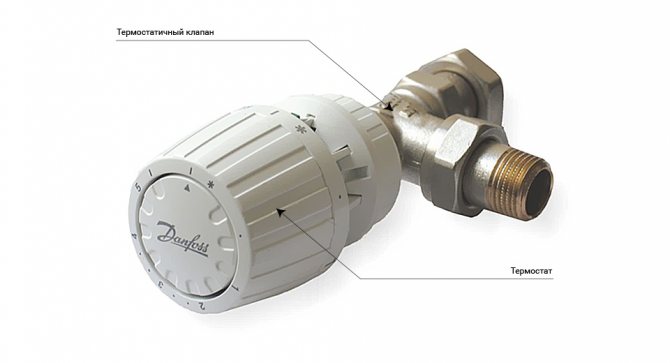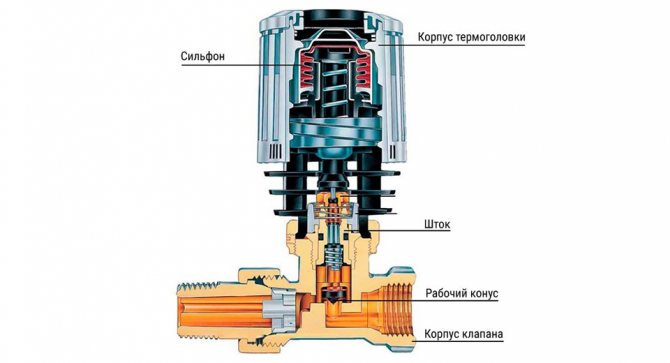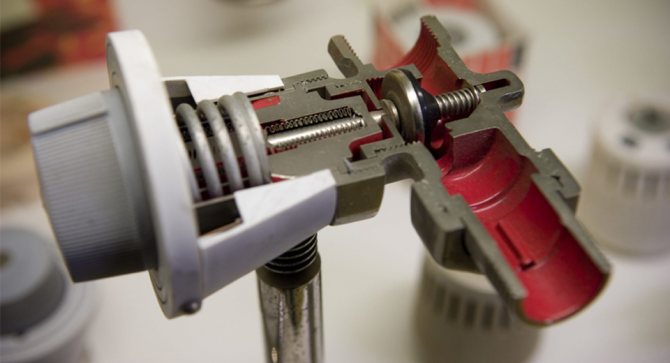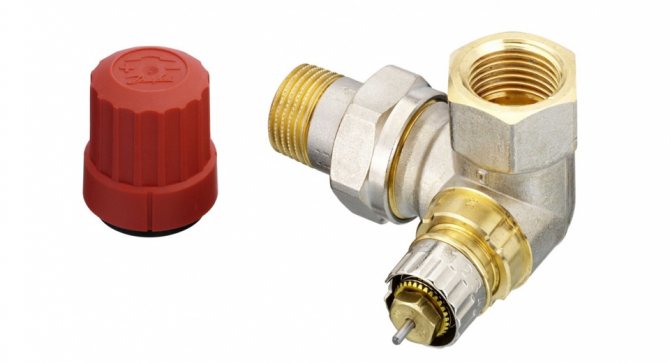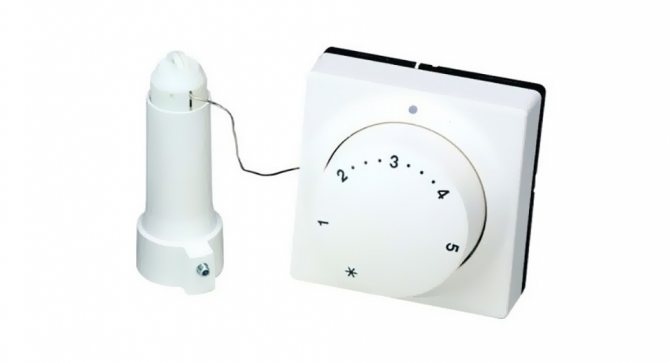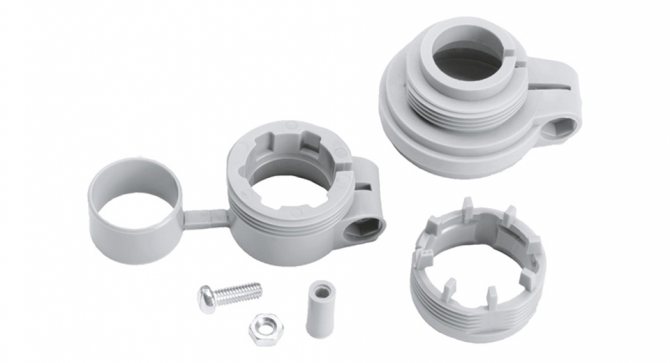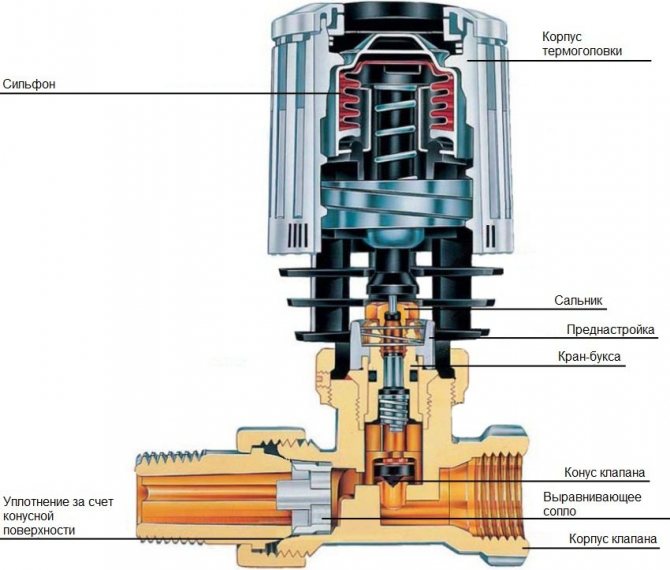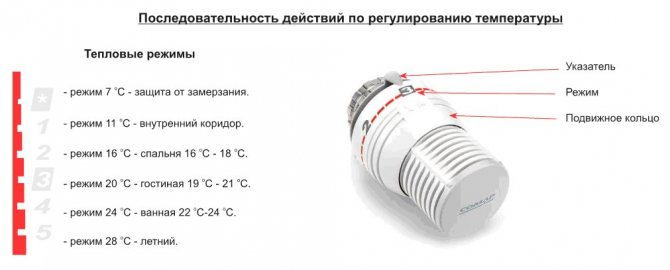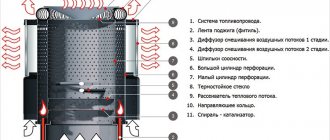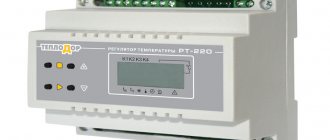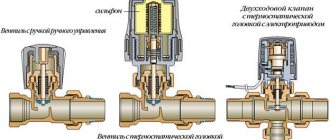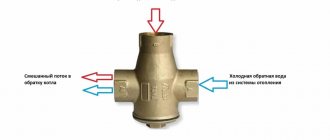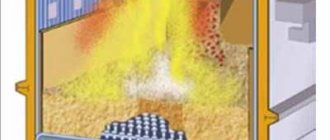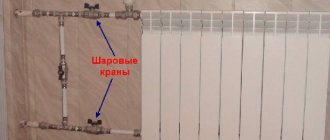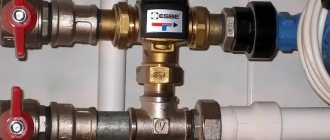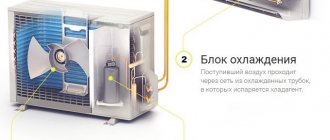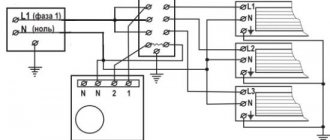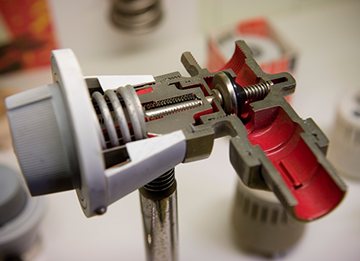
Installing a thermostat on a radiator is an opportunity to reduce heating costs, improve the microclimate in the house, as well as careful use of the earth's energy resources.
The motives may be different, but the decision is being implemented more and more often.
Many people choose Danfoss as an equipment manufacturer.
And not surprisingly, the products of a well-known brand are easy to find on the shelves of many stores.
The technology for the production of their thermostats based on a gas-filled bellows is patented and used at the company's own factories. If you also decide to purchase a Danfoss thermostat, the installation and operating instructions will come in handy.
Thermostats for a Danfoss heating radiator
The purpose of installing a thermostat is to maintain the air temperature in the house selected by the consumer.
The design of the thermostat for radiators includes two elements that complement each other:
- Thermostat (or thermostatic element).
- Danfoss thermostat valve.
The valve is connected directly to the battery, and a thermostatic element is installed on it.
The backbone of the basics is a thermostat. It is he who reacts to changes in ambient temperature and affects the valve, which blocks the flow of the coolant.
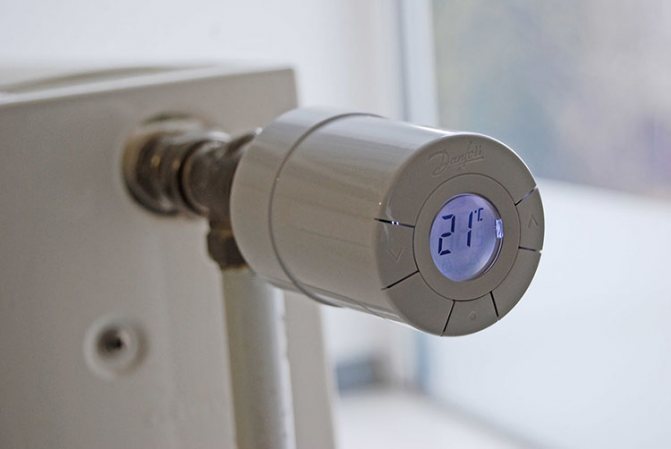

Inside the thermostat head there is a bellows (corrugated chamber that can change dimensions) filled with gas. Gas, depending on the temperature, changes its state of aggregation (when cooled, it condenses). This leads to a change in the volume and pressure in the chamber. The chamber decreases in size, pulls the spool stem, which opens a larger clearance in the valve for the flow of coolant.
When heated, the reverse process of expansion and overlap of the lumen occurs (the accepted standard is 2 V ° C of the excess of the air temperature over the set one).
When a comfortable temperature is set on the regulator scale, a certain compression of the tuning spring is set inside, which is interconnected with a certain gas pressure.
Save up to 46% energy
Radiator thermostats allow you to consume exactly the amount of energy that is needed at the moment to maintain a comfortable temperature in the room. Different thermostatic elements accomplish this task in different ways. Compared to a manual regulating valve, thermostats with liquid or paraffin filling can save 31%, with gas filling 36%. Danfoss living eco electronic radiator thermostats can save up to 46% of your heating energy.
* Based on a study by the Rhine-Westphalian Technical University, Aachen, Germany.
Types and symbols:
- RTS - liquid bellows;
- RTD-G - gas bellows for one-pipe system, or two-pipe system without a pump;
- RTD-N is a gas bellows for two-pipe systems, and systems with a circulation pump.
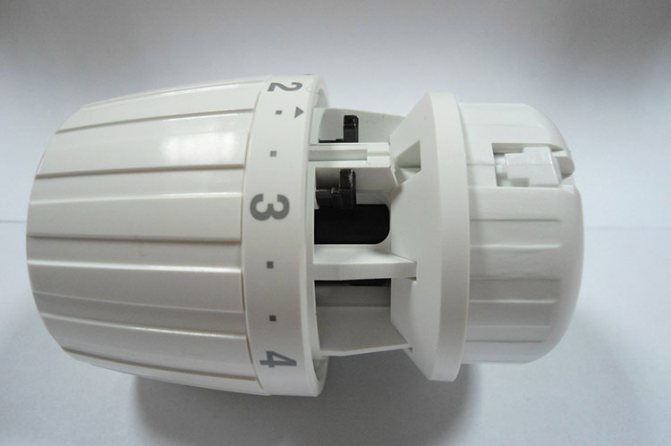

Radiator thermostat DANFOSS RA 2991
There are also modifications of thermoelements, in which:
- Protection against readjustments by random persons is provided (excellent option for public institutions and children's rooms).
- There is an external thermal sensor connected with a two-meter capillary tube, which can be installed further from the radiator, recessed into a niche or crammed with furniture, which gives a more accurate measurement result.
- With a temperature range slightly lower than conventional sensors for integration into a pay-as-you-go system.
The extraction of electricity from the earth is of interest to many people. Electricity from the ground for the house - how to get it yourself, read the article.
You can find formulas and examples for calculating the ventilation of industrial premises here.
You can find reviews on the effectiveness of electric heating convectors at the link.
Fast reaction
Danfoss RA series thermostats are equipped with a gas-filled bellows. The heat capacity of a gas is much less than that of a liquid and, moreover, of paraffin. As a result, gas-filled thermostats react much faster to changes in room temperature. Therefore, Danfoss thermostats maintain the temperature more accurately and provide greater energy savings. Radiator thermostats with a gas-filled thermostatic element ("gas") are patented and manufactured only by Danfoss.
Underfloor heating system
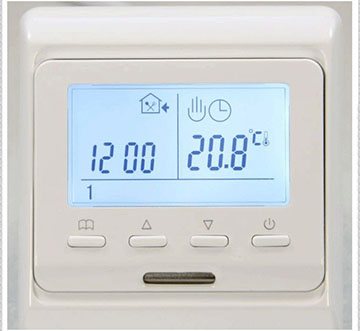

Thermostats are also used for underfloor heating systems. A thermostat for underfloor heating is a must!
After driving the liquid into the floor contour, you need to lower its temperature from 60 - 90 V ° C to a comfortable 35 - 40 V ° C (while the surface of the floor itself will be about 25 V ° C).
Flow meters are powerless if the pressure in the system jumps, if the air is heated, for example, from the sun, and if residents want to save on heating during their absence.
The thermomechanical regulator is best used for small rooms, about 10 m2.
Installation of the thermostatic element
First of all, the valve is mounted on the radiator. For this, the coolant supply is shut off.
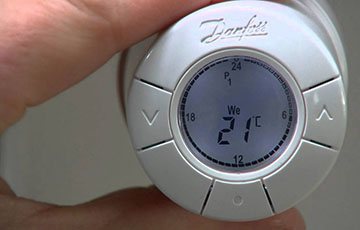

- Markings are made on the supply pipe. The area to be cut must match the length of the valve body minus the threaded connections.
- The heating pipe is cut, an extra piece is cut out.
- A thread is made on the outside of the cut pipe using a scraper, or die.
- The connection is processed with plumbing paste and fum tape.
- The valve body is screwed onto the resulting thread.
- Since the pipe cannot be twisted, an American union nut is twisted on the opposite side of the valve, and then screwed (with a hex wrench) into the radiator squeeze.
- The body of the device is screwed into its own union nut through a rubber washer. This connection does not need to be sealed somehow, the main thing is that it is clean.
- After the valve is installed on the radiator, the protective cap is removed from it (located perpendicular to the pipe).
How to install correctly
They put a thermostat for a heating radiator at the inlet or outlet of the heater - there is no difference, they work with equal success in both positions. How to choose a place to install?
At the recommended installation height. There is such an item in the technical specifications. Each device is factory set - calibrated to control the temperature at a specific height and usually this is the top manifold of the radiator. In this case, the heat regulator is installed at a height of 60-80 cm, it is convenient to adjust it manually if necessary.
If you have a bottom saddle connection (pipes fit only from the bottom), there are three options - look for a device that can be installed at the bottom, put a model with an external sensor, or reconfigure the thermal head. The procedure is simple, the description should be in the passport. All you need is to have a thermometer and turn the head in one direction at certain moments, then in the other direction.
Standard installation - on fum-tape or linen roll with packing paste
The installation process itself is standard. The valve has a thread. Suitable fittings are selected for it or a counter thread is cut on a metal pipe.
One important point to keep in mind for those who want to install a thermostat for a heating radiator in apartment buildings.If you have a single-pipe wiring, they can only be installed if there is a bypass - a section of pipe that stands in front of the battery and connects two pipes together.
Otherwise, you will regulate the entire riser, which your neighbors will definitely not like. For such a violation, a very substantial fine can be written out. Therefore, it is better to put a bypass (if not).
Sensor mounting
As already mentioned, a remote sensor is needed if the battery is built into the wall or is closed by something (furniture, screen, blackout curtains).
A sensor and a tuning unit are combined in one housing of this element.
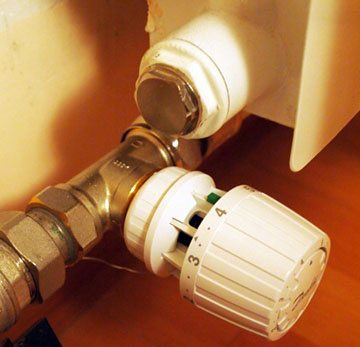

- It is best to locate the device in an open (but without drafts) section of the wall, at a height of about 1.4 m from the floor. Avoid places near appliances that can greatly change the temperature of the environment - air conditioners, stoves, etc.
- The set of the device has a small mounting panel, which is fixed to the selected place using a pair of self-tapping screws.
- A capillary tube is wound inside the sensor. It is pulled to the required length so that the device reaches the fixed bar.
- The capillary tube is neatly fixed to the back of the valve.
- The sensor is simply snapped onto the bar.
The microclimate in the house and the humidity of the air are two inextricably linked concepts. Air humidifiers - benefits and harms for home and health, read about this in the article.
What kind of insulation for a warm floor to choose, read in this thread. And also you will find general information about the installation of insulation.
Setting a limit
The work of thermostats is based on physical laws. Therefore, it must be remembered that the conditions in which the device is located can make some adjustments (for example, distance from a heat source). There are indicative tables of the correspondence of the controller scale and temperature, which can be taken as a guideline during installation. However, after the basic setup, you will need to "understand" your thermostat.
- Set the temperature on the handle with marks.
- An hour later, control measurements are carried out with a room thermometer at several points in the room.
- If the temperature is higher or lower, the readings on the handle are corrected.
Proportional band - 2 ° C. If you set the temperature to 20 °, then the device will keep the readings in the range from 20 to 22 ° C.
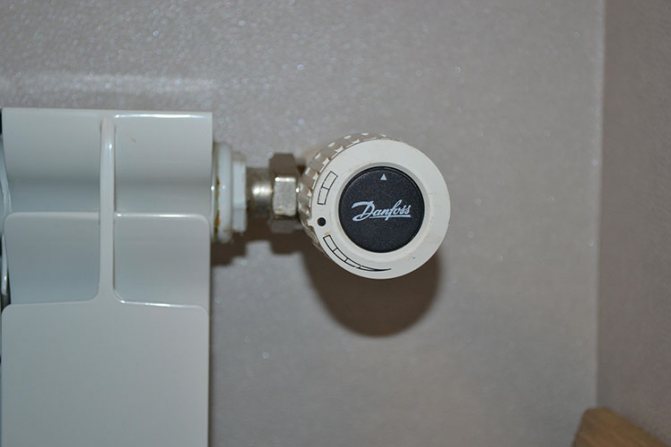

Sensor after installation on a radiator
Two pins that are included with the sensor will help to set the minimum and maximum position limits for the thermocouple.
They are located at the bottom of the device:
- To set the limit to about, you need to pull out the limiter and set the sensor reading to about. Then the pin is inserted into the hole, which in this position is under the diamond symbol.
- The second limiting threshold is set in the same way. The handle turns to the desired value, only the pin is inserted into the hole under the triangle icon.
- Both pins are removed.
- The handle is placed on the desired value.
- In this position, the first pin is inserted into the hole below the diamond.
- The second pin is in the hole under the triangle.
Danfoss thermostats have many positive reviews. It is a very easy-to-use device that does not require any attention after the initial installation and setup. But the result will be a more comfortable temperature in the apartment, as well as, in some cases, significant budget savings.
Video on the topic
Danfoss thermostats can be installed independently, but for this you need to know the direction of movement of the coolant (you can find out from the operating company) and what kind of heating system you have, or rather one-pipe or two-pipe, this information can also be obtained from the operating company.
Heating and ventilation costs average 30-50% of the family budget.And the problem is not in the function itself, but in poor quality energy consumption. A convenient solution was offered by Danfoss - a thermostat for controlling the temperature in the house and the operation of the heating system. This device can be used in combination with almost all boilers, including heating devices with a liquid heat carrier.
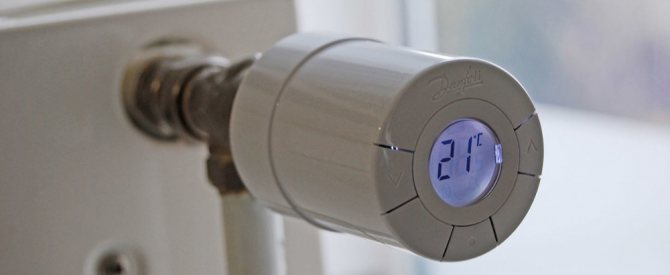

The thermal head is used at home, in an apartment, production premises, warehouses, closed greenhouses and greenhouses, in a word, wherever a relatively constant temperature regime is required. And this applies not only to heating, but also to air conditioning. So, the thermal head equally successfully interacts with air conditioners, refrigeration equipment and other units responsible for temperature.
You can now buy a thermostat with a modern design
Red Dot is a world-renowned "quality mark" in the field of industrial design. Only products that are exceptional in terms of aesthetics and functionality receive this praise. In 2010 Danfoss received the Red Dot award for the development of the living thermostats.
In the countries of the post-Soviet space, up to 40% of energy resources are spent on heating and ventilation of buildings, this is several times more than in advanced European countries. The issue of energy saving is more acute than ever, especially against the background of the constant increase in the cost of energy resources. One of the devices that allows you to save thermal energy in the house is a thermostat for a battery, whose installation can reduce heat consumption by up to 20%. But for this it is necessary to choose the right regulators for the heating system and carry out their installation, which will be discussed in this article.
Design features
The main purpose of the Danfoss thermostat is to maintain the temperature mode selected by the user for a long time. The design of the device includes two main parts:
- thermostatic element or as it is also called - thermostat;
- valve.
The valve is first mounted on the battery and only then the thermostat is installed on it. It is the second element that is the main one in the design of the device. It monitors the ambient temperature, after which it gives the necessary signal to the valve, which in turn opens or closes the coolant flow.
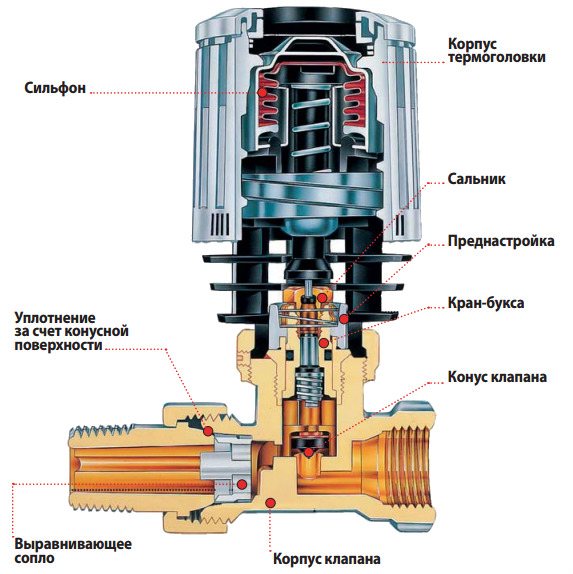

Danfoss thermostatic valve design
In the inner area of the Danfoss thermostat there is a bellows - a corrugated container filled with gas or liquid. When exposed to temperature, the filler begins to resize and press on the check valve. When the flow of the coolant in the heating units is shut off, the temperature indicator begins to increase.
If the room is very cold, the filler shrinks and a reverse reaction is formed - the chamber pulls the spool stem behind it, which in turn opens the gap in the valve element for the coolant to enter.
The company produces two types of thermostat - for gas and liquid. But the second option is considered more inert, it gives a signal to change the temperature regime much more slowly.
Varieties and symbols of devices
The type of filler and purpose is defined by the following abbreviation:
- RTS - liquid bellows
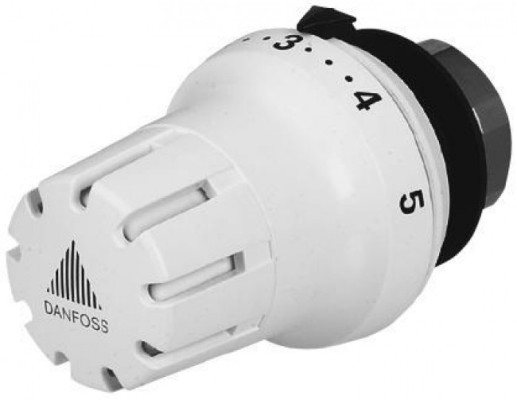

- RTD-G - gas device for one-pipe or two-pipe system, in which there is no pump
Valve RTD-G-20 for one pipe system
- RTD-N - gas device for one-pipe, two-pipe pumping system
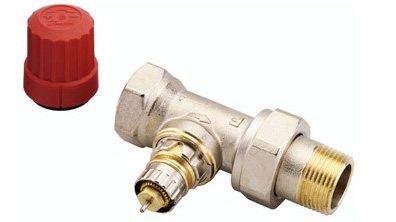

Thermostat valve RTD-N-15
In some models, in addition to the basic function, there are a number of additional options. For example, a program to protect against tampering with the installed settings by random persons. The option will be convenient for installation in public institutions or childcare facilities.The number of modes and types of functions differ depending on the selected modification.
Model range of devices
The company produces a fairly wide range of Danfoss heating temperature controllers.
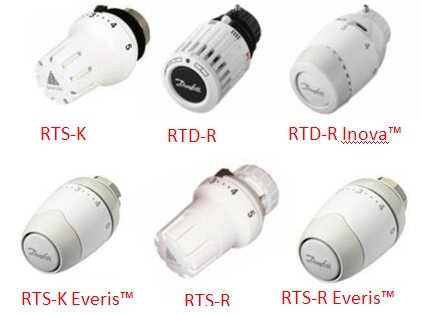

Varieties of valves
The most popular variations are:
- Danfoss RDT marking 3640 - the device is intended for use on heating systems of two-pipe standard type. It is equipped with an RTD option, which excludes freezing of the line in the cold season. Used in domestic and industrial environments. It has four divisions with designations in the form of Roman numerals.
- The Danfoss RAX regulator is a liquid type of devices that is used for installation on designer-type radiators or heated towel rails. Possesses attractive external parameters and minimalistic style. On the case, there are only divisions with Roman or Arabic numerals.
- Living ECO with indoor climate monitoring. It is an advanced series that has been successfully used in commercial establishments and residential buildings. A feature of a thermostat for a heating radiator is that it has a liquid crystal screen that provides all the necessary information about the coolant. Also on the case there are three main keys for setting the modes.
- The Danfoss RA-299 gas device with automated temperature control is available in several colors. It reacts quickly to temperature changes. It is used exclusively for equipping traditional heating systems.
- 013 G4 001-013 G4 009 - multifunctional series of devices, suitable both for heated towel rails and for various areas of the heating device. There are left- and right-sided types.
Differences between some models
Depending on the model, the installed thermostats can be divided according to the principle of operation and design features.
- Supported temperature ranges from 5 to 30 ℃.
- Temperature measurement sensor option - it can be built-in, remotely controlled and programmable.
- They differ in the type of installation - angled, straight, for the bottom or top type of connection.
The most popular are direct heat regulators for Danfoss battery, their design allows connecting batteries with bottom, top and side connections. The only thing that needs to be taken into account is the length of the shut-off valve and the length of the installation pipes must be selected accordingly.
The possibility of implementing any type of connection is carried out thanks to the stem located along the axis of the shank. The model designation of such equipment is RTD-N UK. The wide installation possibilities of the UK model valves allow them to be used in conjunction with Danfoss floor convectors.
Corner thermostats are attached directly to the point of intake of the coolant by the radiator and require a minimum of additional installation work, do not take up unnecessary space. Sensors such as RTD - N or RTD - G are labeled depending on the model. The increased throughput makes it possible to use thermal valves in closed and open heating systems.
Another type of temperature regulator for Danfoss radiators is the option built into the radiator. Such equipment is widely used in compact devices located in niches, close to the side surfaces. Often built-in valves are equipped with external thermostats.

